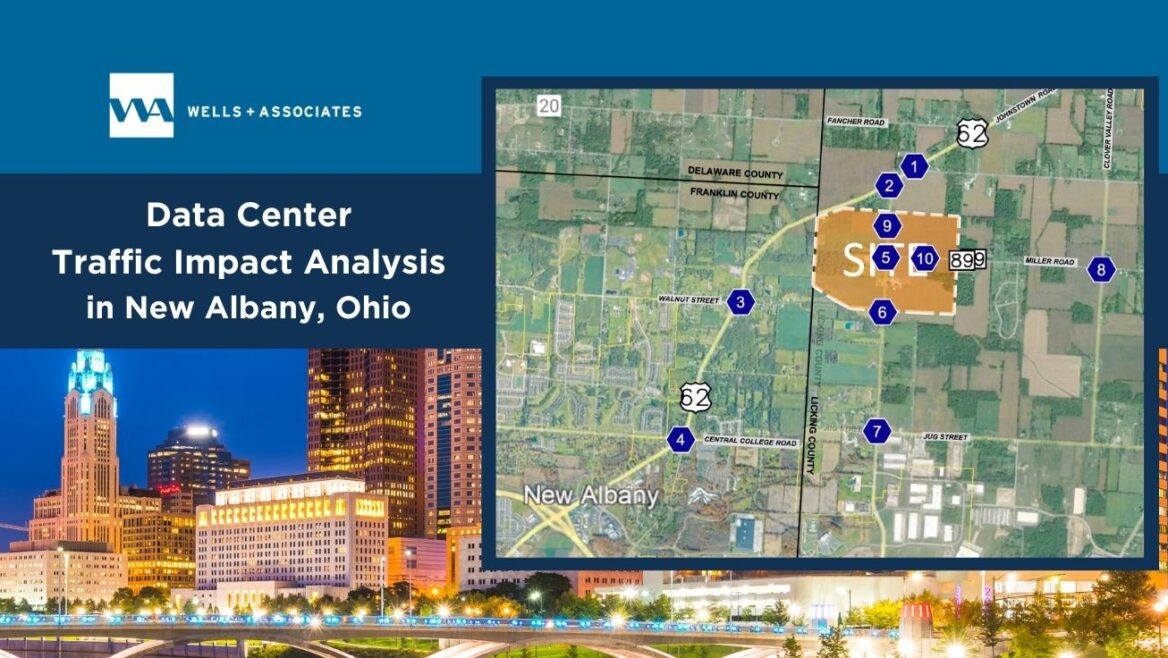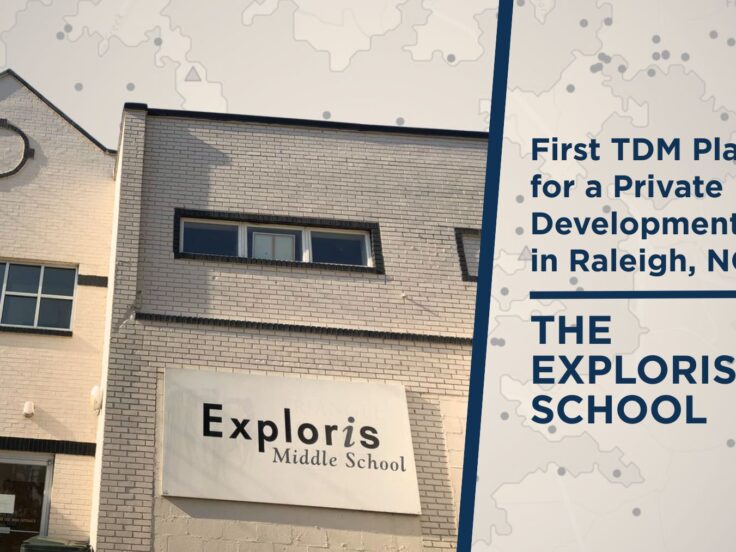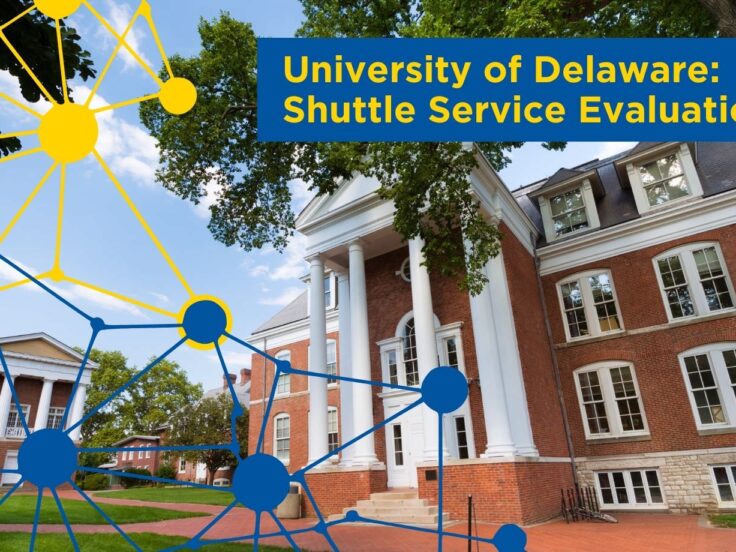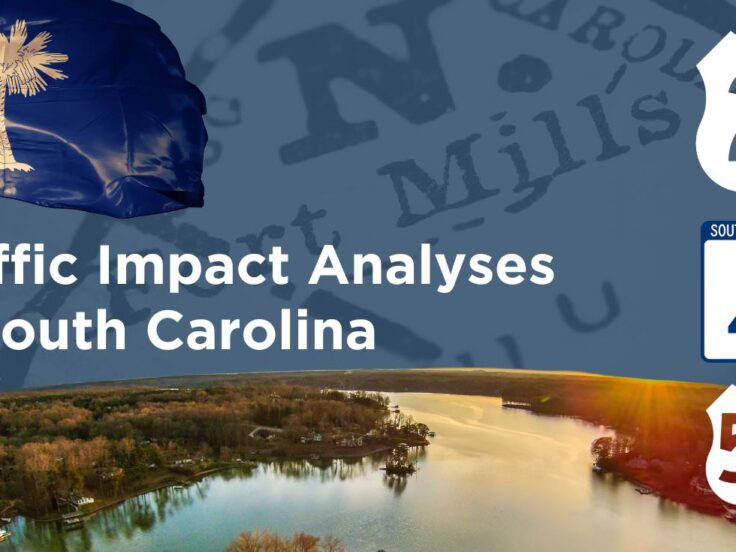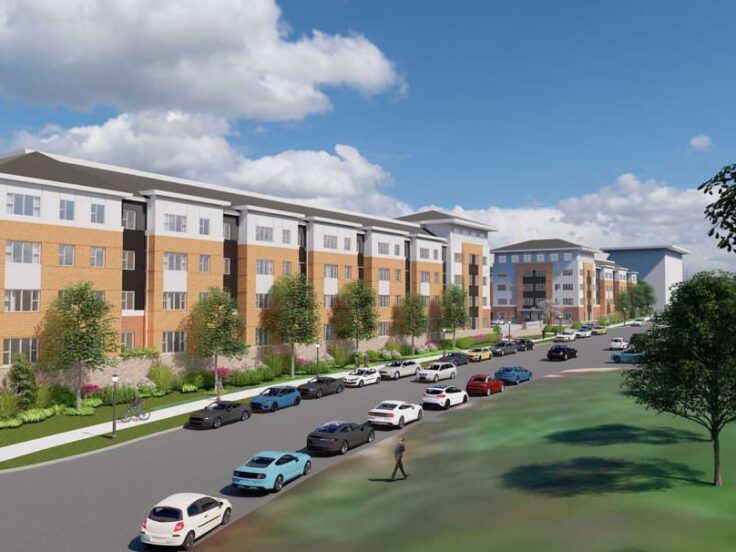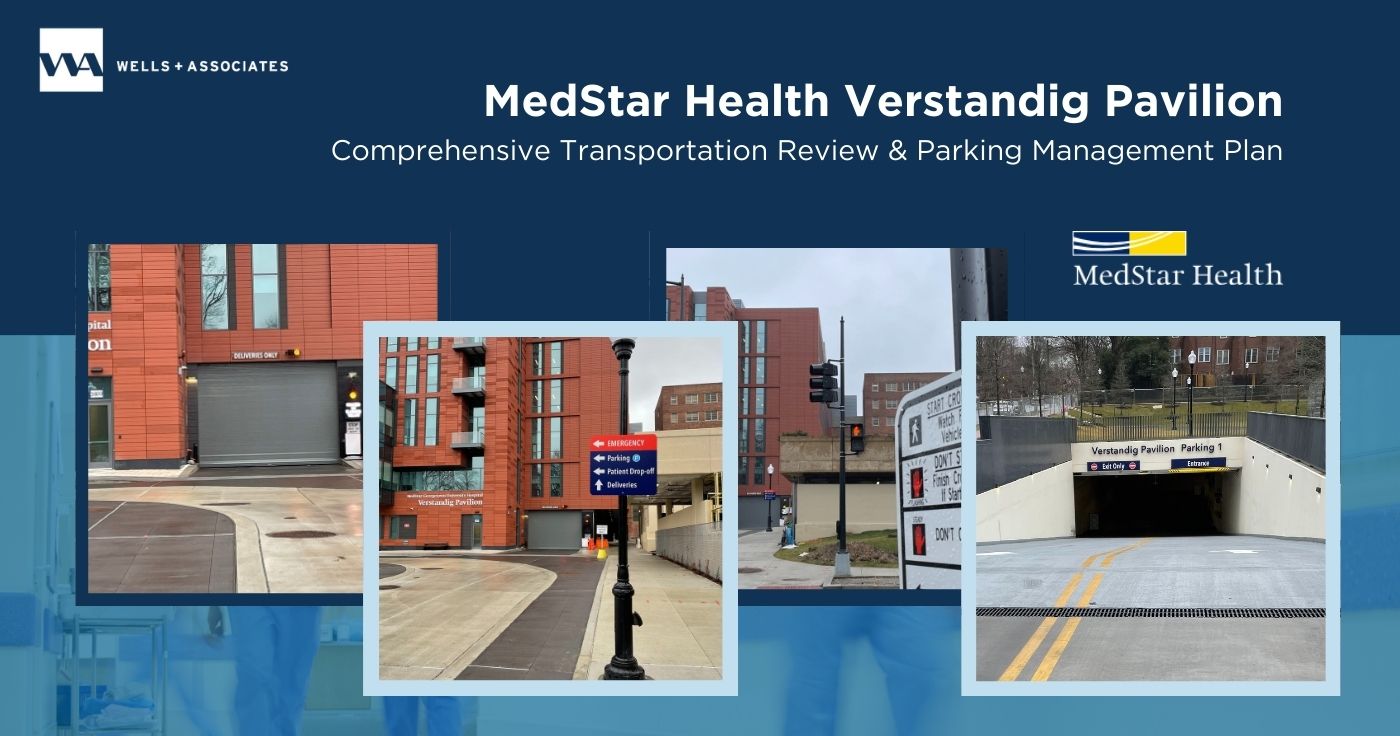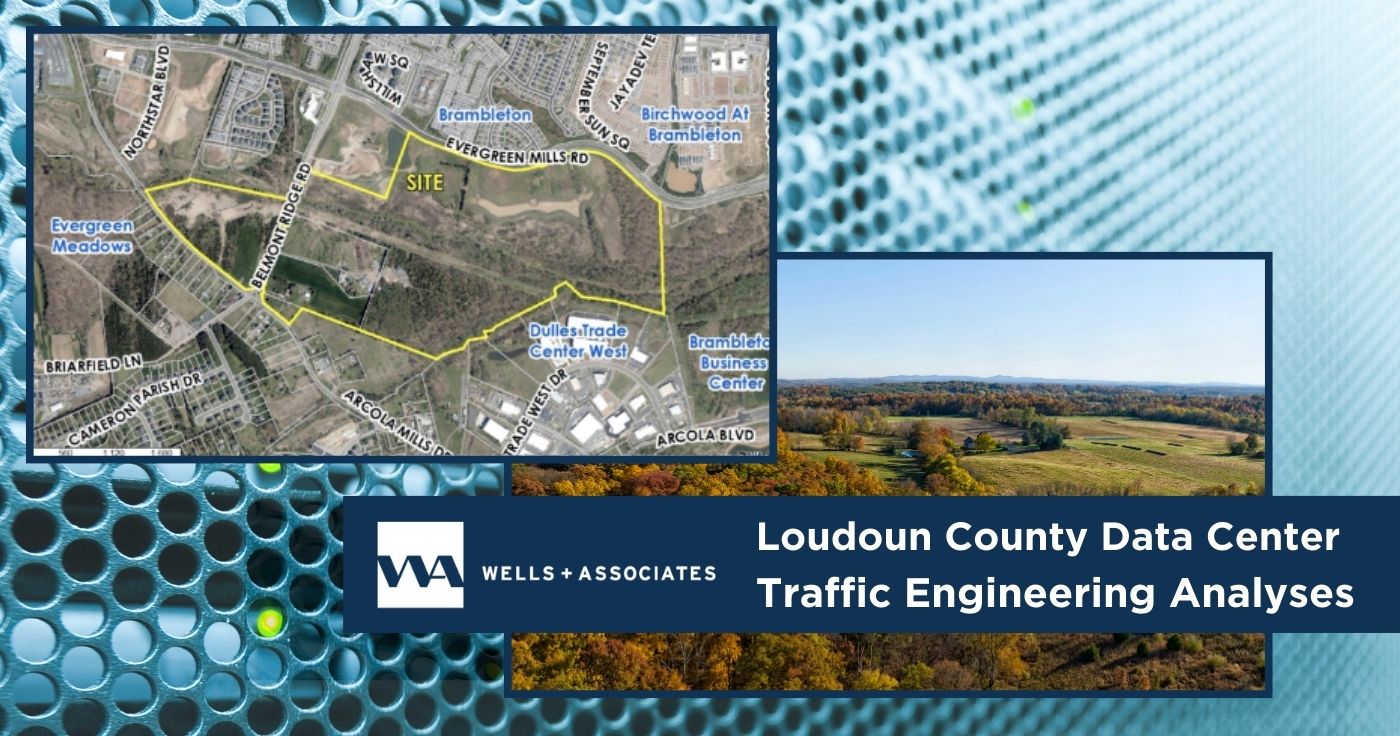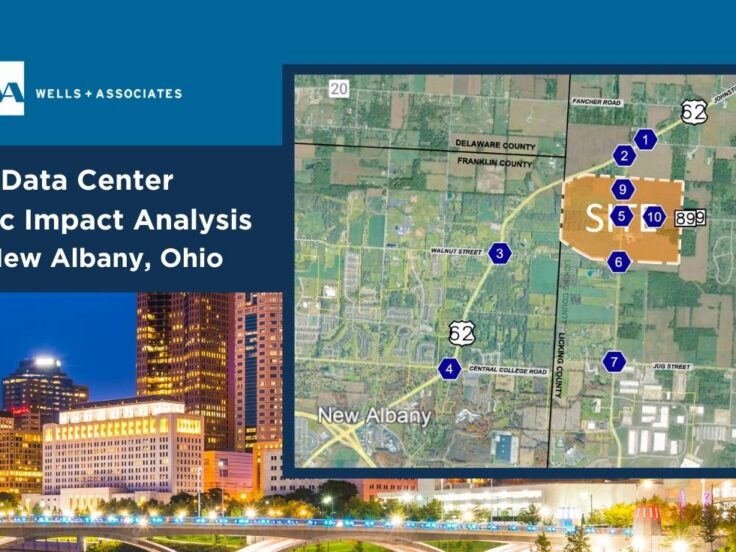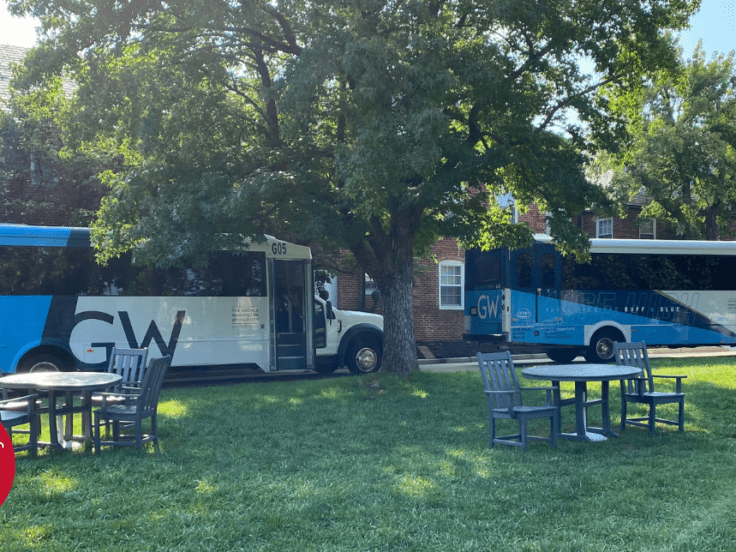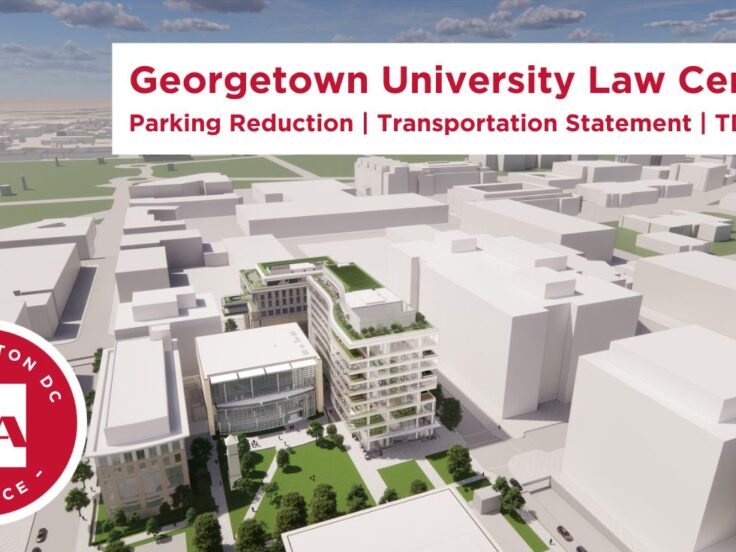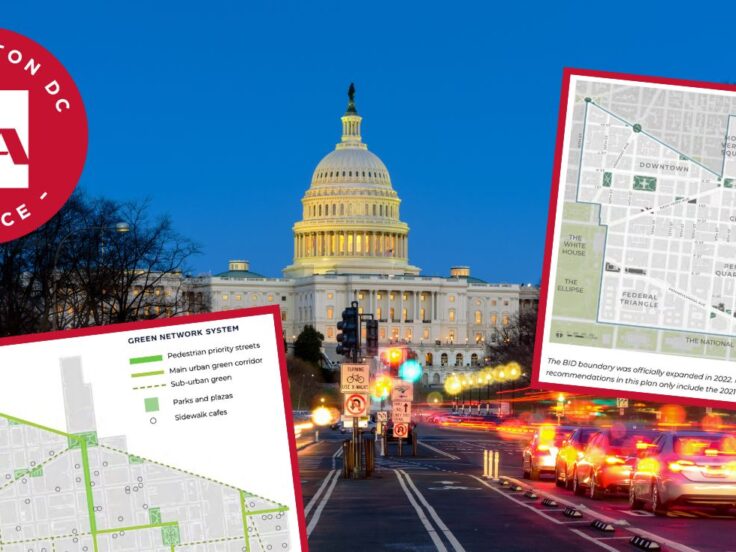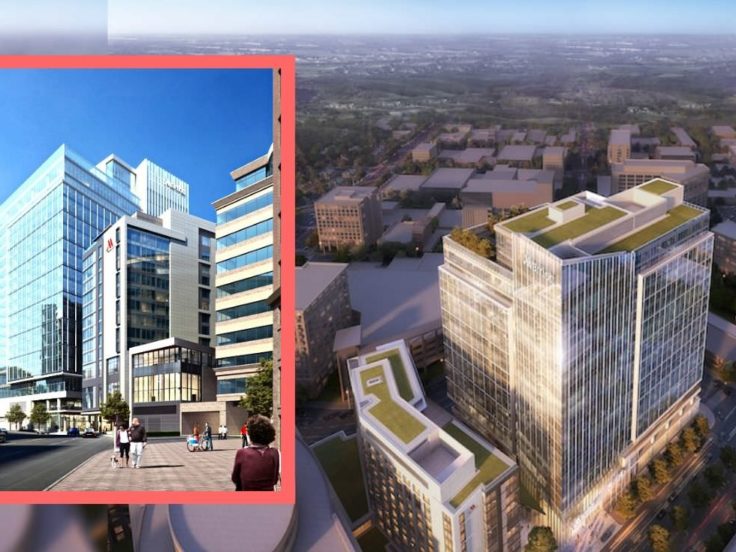Nicholas Kosar
Our data center traffic engineering team prepared a traffic impact analysis for the proposed CHM Data Center in New Albany, Ohio. This comprehensive traffic analysis included an evaluation of existing conditions and future conditions that accounted for the vehicle trips expected to be generated by the proposed data center. We also provided a variety of recommended solutions to manage traffic generated by the development, including analyses of traffic controls, intersections, site access, travel lanes and roadway widening, and vehicle queuing.
Background: New Data Center in Columbus Area
Located on the outskirts of a metropolitan area, the CMH Data Center building was proposed to include over 3 million square feet of data center uses, expected to be built and occupied by 2025. It would replace a portion of data center and warehouse development uses assumed in the “New Albany Technology Manufacturing District Traffic Impact Study” (previously prepared in a separate traffic study in 2022). The CMH Data Center was approved for development in February 2023.
Data Center Traffic Impact Analysis
Our analysis of this project included traffic projections for 2025 and 2035, with redevelopment of the site both with and without the planned extension of Walnut Street as identified in the City’s Strategic Plan. It relied on various sources, including previous traffic studies in the area; the City of New Albany, OH; the Institute of Transportation Engineers (ITE); the Ohio Department of Transportation; and the CMH Data Center development team.
Ten intersections were evaluated for this project, including local roads and U.S. Route 62. These intersections were analyzed for both the AM and PM peak commuter hours and included signalization and roundabouts at certain locations. Our analysis in relation to the proposed road widening included impacts on nearby residential neighborhoods, roadway widening options, and changes in commercial traffic.
The results of the study indicated that adequate traffic operations would be maintained in the future with the full development of the site, with or without the extension of Walnut Street. Thus, the extension is not necessary from a traffic capacity perspective. It also showed that if Walnut Street were extended, significant widening would be needed that would disrupt the existing residential neighborhood.

